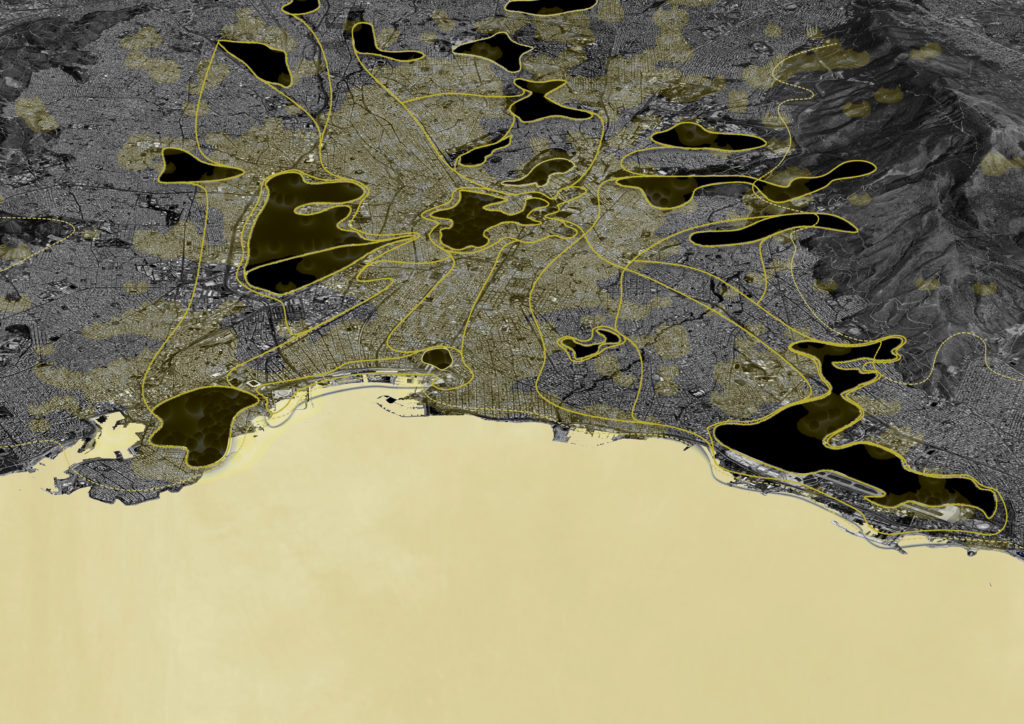Athens, Greece
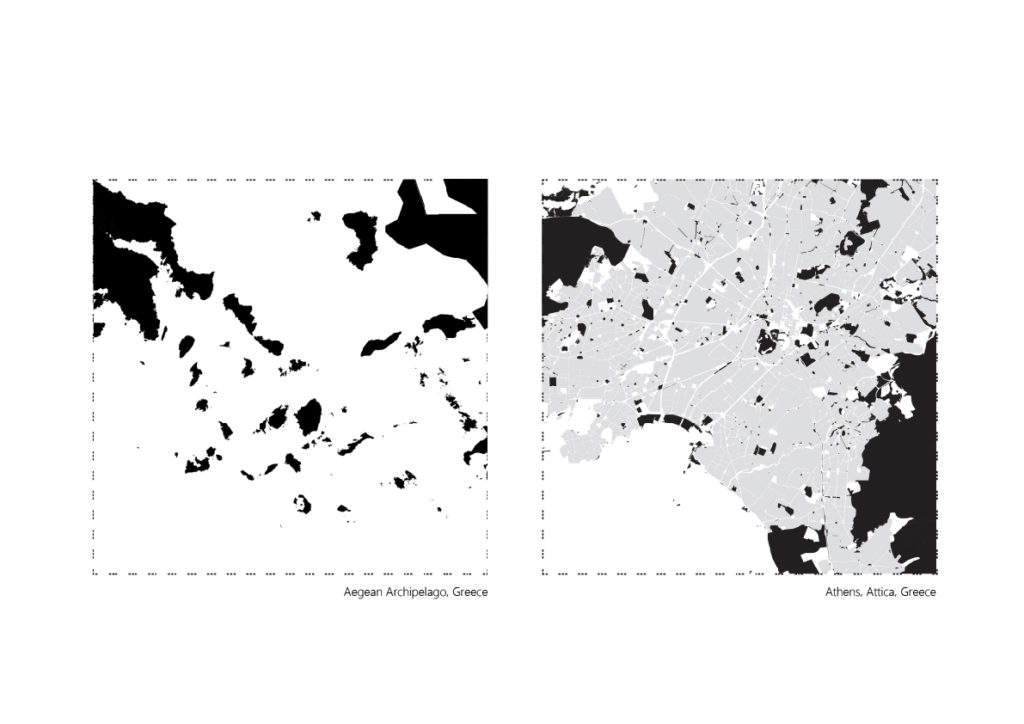
“Archipelago is a group of islands set in a sea that simultaneously divides and unites them”
The case of the Aegean Archipelago in Greece, which consists of 1.145 islands and islets, for reasons associated with historical and geographical circumstances, represents the promise of a different urbanism.
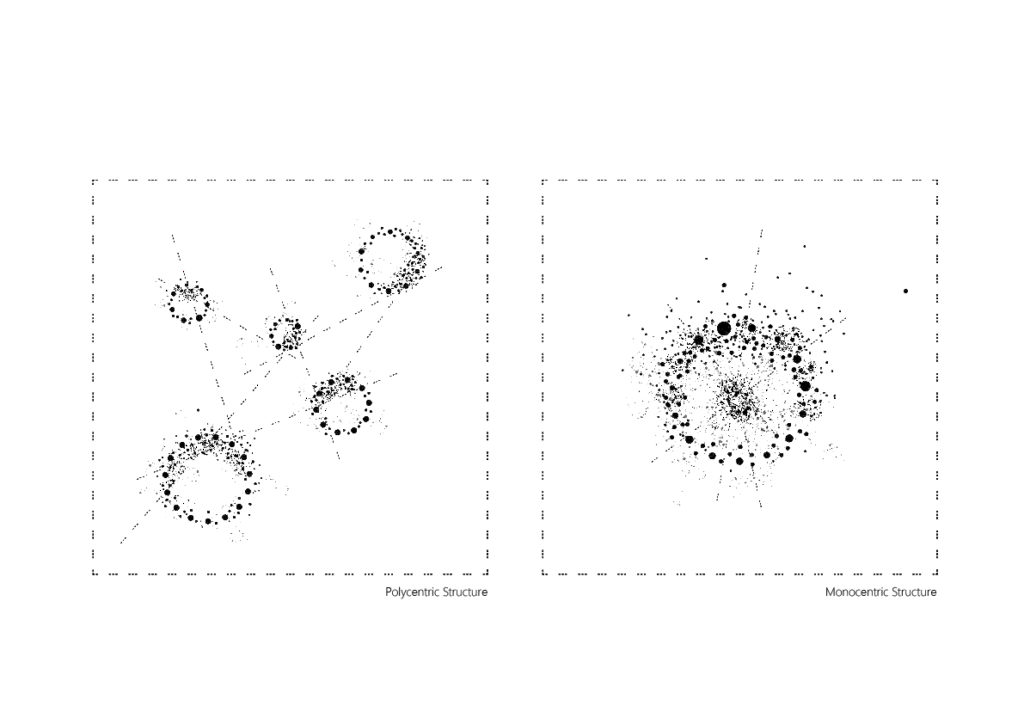
Even in the absolute separation of the islands, there is not a single centrality developed. Polycentrality is both a factor that attracts the islands toward each other and separates them within the archipelago. As a result, it prevents a single mass and it increases the relationship between the distinct parts of the polycentric system.
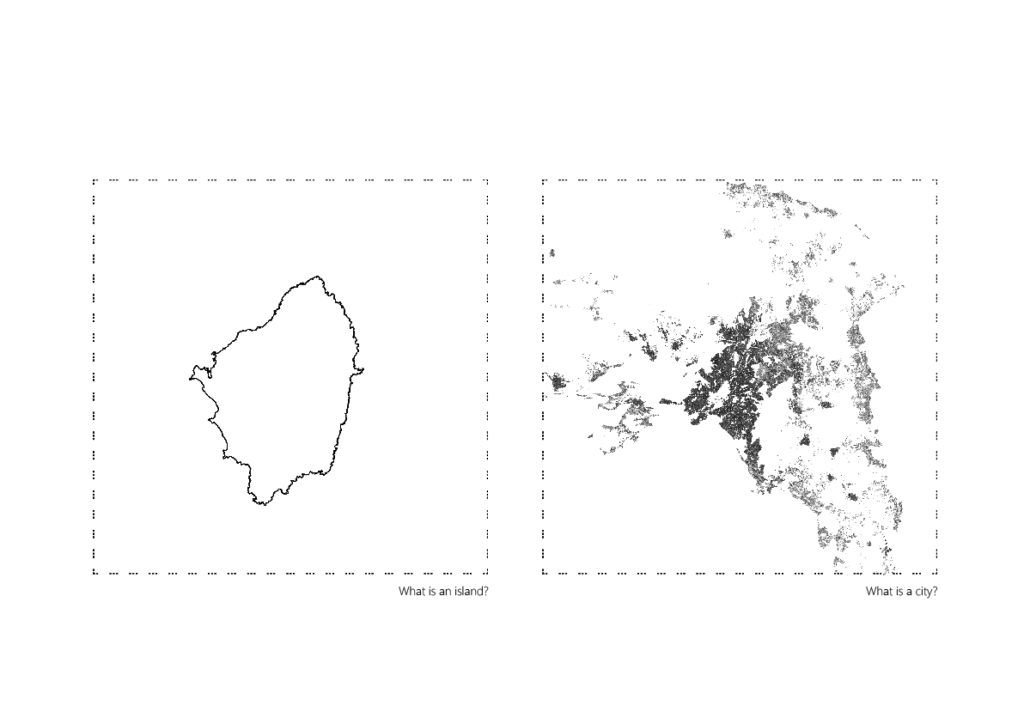
“An island is precisely defined by its borders and as a consequence its expansion remains totally restricted”
Athens follows a monocentric system, with different capacities based on a radial – expansive urban structure toward its suburbs and its natural borders (Sea Front, Parnitha mount., Penteli mount., Hemitus mount.). Notably, although the city’s center is located in the heart of the mainland, the city has a strong connection with the sea surrounded by and the greater Athens features the longest coastline of any European capital. To a large extent, this expansion was made in an unregulated informal way, in the post war era, constructing hyperdensity at the built environment. Meanwhile, Athens has a very diverse topography that creates different qualities of the urban space. Thus, it could be read as a disjointed and incremental system of clusters combining nature and culture. The network of the clusters above are creating the concept of (is)landicity
“(Is)landicity is a conceptual study on disjointed clustering of city’s nature as well as tangible and intangible culture.”
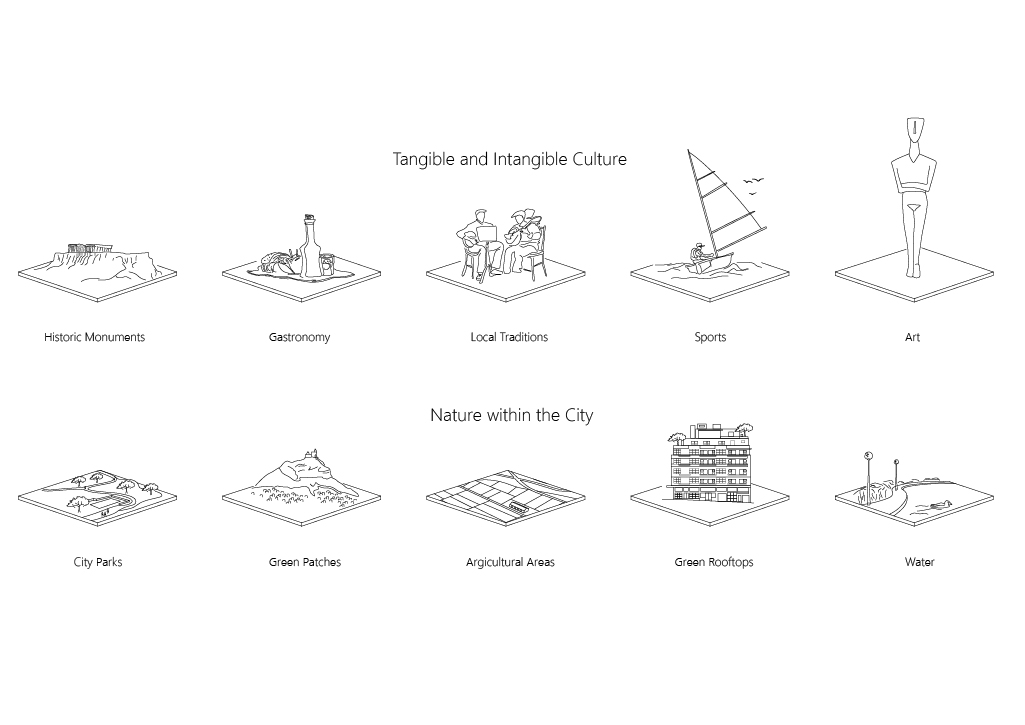
To identify those clusters-zones we collected all the information about tangible and intangible culture as well as the nature within and around the city. Intangible cultural elements that have been identified are Historic Monuments, Gastronomy, Local Traditions, Sport and Art while tangible cultural elements are City Parks, Green Patches, Agricultural Areas e.t.c.
By creating a network of (is)landicities, we can explore different levels of capacities created locally, off the center of the city. By unifying natural and cultural elements we aim at enriching the local identity of different areas within the dominant and uniformal expansion of the city.
